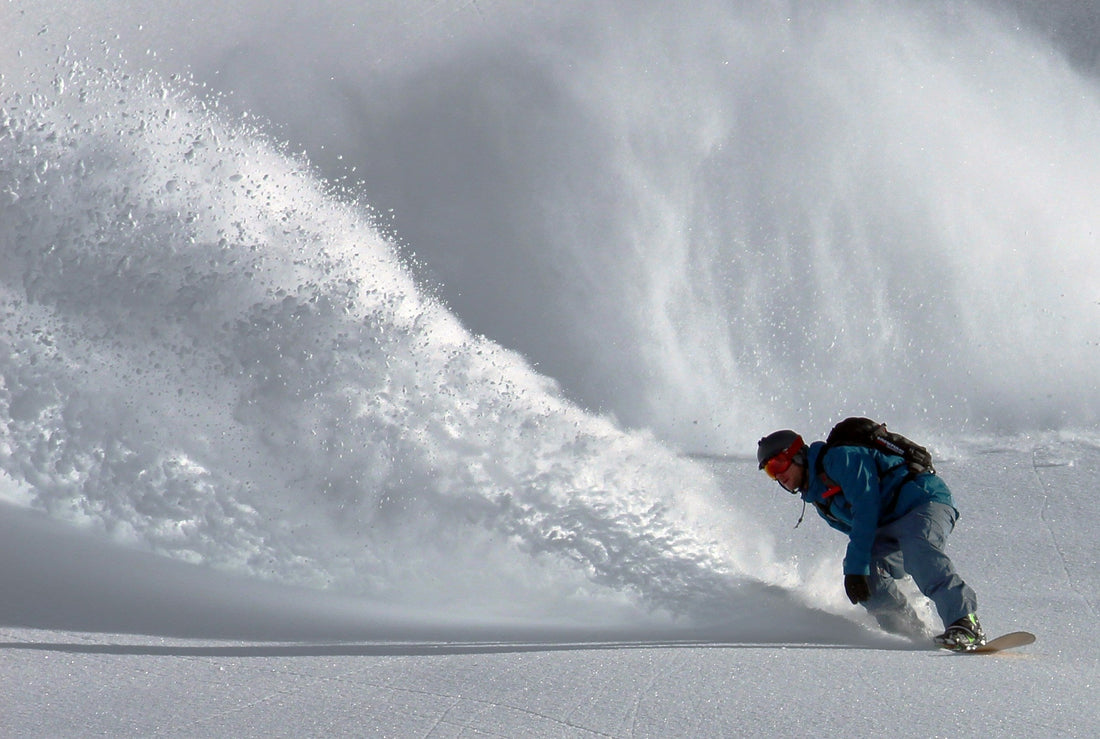
The Most Common Snowboarding Injuries (and How to Prevent Them)
Share
Snowboarding is one of the most thrilling winter sports—but with the excitement comes the risk of painful injuries. Whether you’re a beginner learning your first turns or an advanced rider sending tricks in the park, crashes are inevitable. The good news? With the right knowledge and protective gear, many of these injuries can be avoided.
In this guide, we’ll cover the most common snowboarding injuries, how they happen, and what you can do to stay safe on the slopes.
1. Tailbone Bruises & Fractures
One of the most common snowboarding injuries is a bruised or fractured tailbone. Beginners are especially prone to this because falling backward is almost unavoidable when learning. Landing directly on hard-packed snow or ice can leave you sore for weeks.
Prevention Tip: Strengthen your core for better balance and invest in impact shorts with tailbone padding. The AVIVOR 3D Protective Shorts feature advanced EVA padding specifically over the tailbone area to absorb shock and reduce painful impacts.
2. Wrist Injuries
When snowboarders fall, the natural instinct is to put their hands out to break the fall. Unfortunately, this often leads to sprains, fractures, or even broken wrists.
Prevention Tip: Learn how to fall properly (by keeping your hands close to your body) and consider wearing wrist guards for extra protection.
3. Hip & Thigh Contusions
Landing on your side or taking a hard slam in the terrain park can result in hip or thigh contusions. These deep muscle bruises are painful and can limit your movement for days.
Prevention Tip: Wear padded shorts designed with strategically placed hip and thigh padding, like the AVIVOR 3D Protective Shorts, which shield both areas without adding bulk.
4. Knee Injuries (Sprains & ACL Tears)
Snowboarding puts a lot of pressure on the knees, especially during landings and sharp turns. Falls or awkward twists can lead to sprained ligaments or ACL injuries—one of the most dreaded injuries in snow sports.
Prevention Tip: Keep your leg muscles strong, use proper stance alignment, and wear protective gear that cushions impacts to reduce stress on the joints.
5. Shoulder Dislocations & Collarbones
When riders take a forward tumble, the shoulders and collarbones often take the hit. Dislocations, fractures, or painful bruises are not uncommon.
Prevention Tip: Improve your falling technique and avoid reaching out too far with your arms. Impact-absorbing gear can help reduce the blow during hard landings.
6. Lower Back Strains
Repeated falls or twisting motions can strain the lower back muscles and cause lingering soreness. This type of injury can slow your progression and make riding uncomfortable.
Prevention Tip: Stretch and strengthen your back regularly, and consider gear with spinal support padding. Shorts like AVIVOR’s design provide an extra buffer that helps protect your lower back when you hit the ground.
Ride Safer, Ride Longer
Snowboarding will always involve falls—but painful injuries don’t have to be part of the experience. The right preparation, proper falling techniques, and protective gear can make a huge difference in both safety and confidence.
That’s why many riders are turning to AVIVOR 3D Protective Shorts, designed for snowboarders who want maximum protection without sacrificing comfort or flexibility.
Why Riders Love AVIVOR 3D Protective Shorts:
✔ Advanced EVA Padding – Shields hips, thighs, and tailbone from impact.
✔ Breathable Mesh Design – Keeps you cool and irritation-free.
✔ Flexible & Lightweight Fit – Moves naturally with your body.
✔ Adjustable Waistband – Customizable comfort with zero rubbing.
✔ Multi-Sport Use – Perfect for snowboarding, skiing, skating, hockey, and more.
Unlike bulky protective shorts that feel restrictive, AVIVOR’s lightweight and breathable design lets you ride freely while staying protected. Whether you’re learning to link turns or throwing tricks in the park, these padded shorts give you the confidence to push your limits and progress faster.
Final Thoughts
Snowboarding is about freedom, adrenaline, and fun—not injuries. By knowing the most common risks and taking steps to protect yourself, you’ll enjoy more time on the mountain and recover faster from the inevitable falls.
If you want to ride with confidence and reduce the risk of painful bruises and fractures, adding padded shorts like the AVIVOR 3D Protective Shorts to your snowboarding gear setup is one of the smartest moves you can make.
